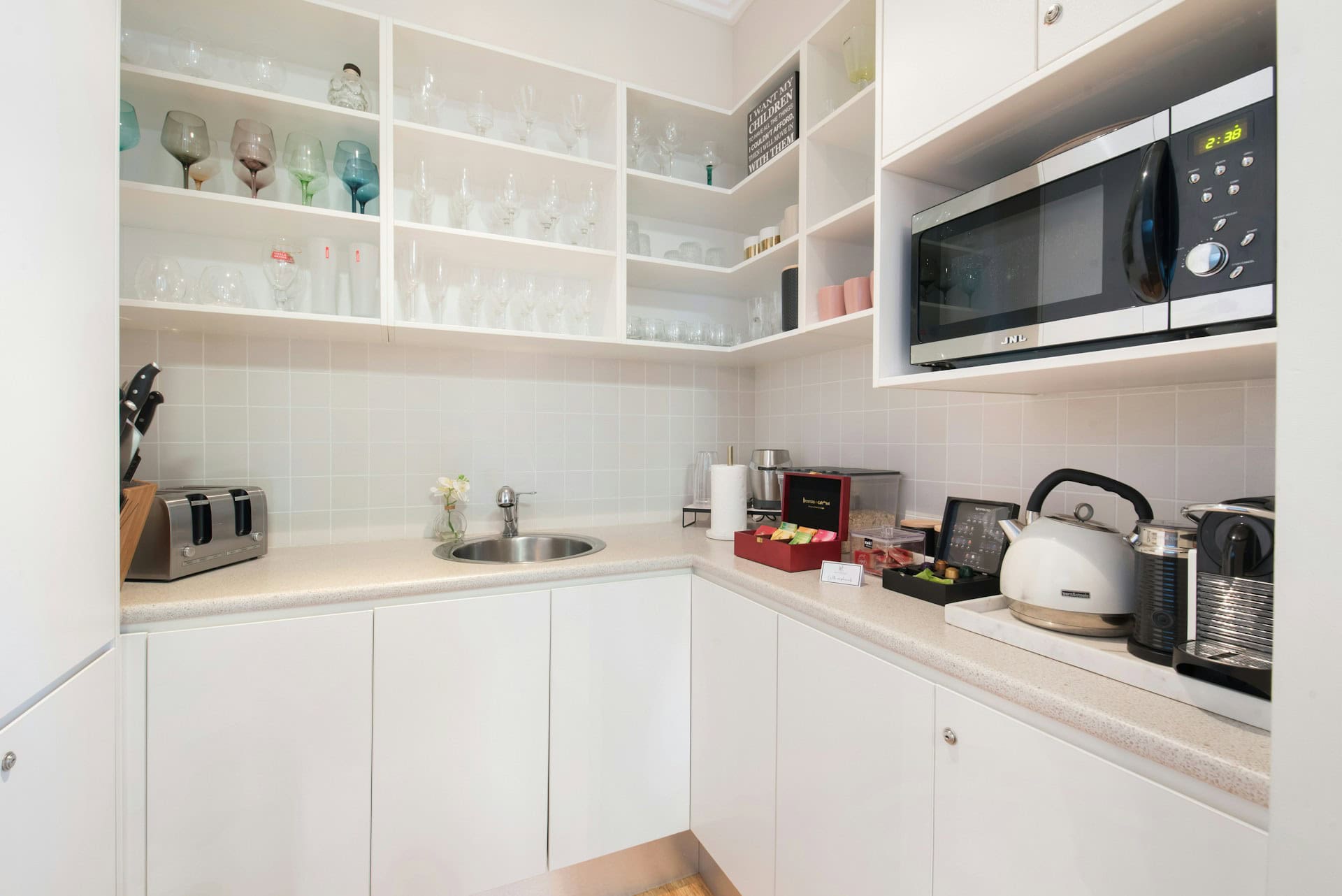
Question: Can I Put a Freestanding Microwave in a Cupboard?
Answer: No, you should not put a freestanding microwave in a cupboard. Microwaves need adequate ventilation. Enclosing it in a cupboard can cause overheating and a fire hazard. You could consider doing it but proper ventilation is required.
Microwave Placement: Cupboard Considerations
Many homeowners contemplate integrating their freestanding microwave into existing kitchen cabinetry. This raises the question: Can I put a freestanding microwave in a cupboard? The simple answer is: it depends. Several factors influence this decision, including cupboard dimensions, ventilation requirements, and the microwave’s size and design. This article examines these critical aspects to help you determine if housing your freestanding microwave in a cupboard suits your kitchen setup.
Proper placement ensures safe operation and prevents potential hazards. Overheating poses a significant risk when microwaves lack adequate ventilation. Understanding your microwave’s specific needs is vital for optimal performance and longevity.
Ventilation
Ventilation plays a critical role in microwave safety and performance. Microwaves generate heat during operation, and adequate airflow prevents overheating. When placing a microwave in a cupboard, ensure sufficient ventilation space around the appliance. Check the manufacturer’s instructions for specific clearance recommendations. Most microwaves require several inches of space on all sides for proper ventilation. Restricted airflow can lead to malfunction and even fire hazards. Prioritize safety by verifying adequate ventilation before enclosing your microwave.
Cabinet modifications may be necessary to accommodate ventilation needs. Cutting holes in the back or top of the cupboard allows heat to escape. Installing vents or fans provides additional airflow. Remember to consider the cupboard material when planning ventilation solutions. Some materials, like wood, require special precautions to prevent fire hazards.
Click here to read more about Blue Kitchen Refacing
Related Article: Do Built-in Microwaves Need to Be Vented?
Related Article: When Should You Not Use a Microwave?
Power Supply and Accessibility
Ensure a readily accessible power outlet exists near the cupboard’s interior. The cord should reach the outlet without stretching or kinking. Avoid placing the microwave near water sources or excessive heat. Keep the power cord away from the appliance’s heat vents. These precautions prevent electrical hazards and ensure the microwave’s safe and efficient operation.
Plan for easy access to the microwave’s controls and door. The cupboard’s design should not obstruct the microwave’s operation. Consider using a cupboard with doors that open fully or installing pull-out shelves for easy access. Convenience features contribute to a user-friendly kitchen experience.
Benefits and Drawbacks of Cupboard Placement
Placing a freestanding microwave in a cupboard offers several advantages. It can create a more streamlined kitchen aesthetic by concealing the appliance. It also frees up valuable counter space. However, this placement also presents potential drawbacks. Reduced ventilation can lead to overheating if not properly addressed. Limited access to controls and the door can also prove inconvenient.
Benefits
Drawbacks
Alternatives to Cupboard Placement
If placing your freestanding microwave in a cupboard proves unsuitable, consider alternative solutions. Microwave carts provide a dedicated space for the appliance and offer mobility. Shelving units accommodate microwaves and additional kitchen items. Over-the-range microwaves combine microwave and range hood functionality, saving space and enhancing kitchen efficiency. Explore these options to find the optimal placement solution for your specific needs and kitchen layout.
Built-in microwaves offer a seamless integrated look. However, installation often requires professional assistance and may involve modifications to your existing cabinetry. Carefully weigh the benefits and costs of each option before making a decision.
Conclusion
Integrating a freestanding microwave into a cupboard can work effectively with careful planning and execution. Prioritize proper ventilation, accurate measurements, and convenient accessibility to ensure both safety and functionality. While cupboard placement offers aesthetic and space-saving benefits, always consider potential drawbacks like overheating and restricted access. Evaluate your specific needs and kitchen layout to determine the most suitable placement for your microwave. Other options, such as microwave carts, shelving, over-the-range models, or built-in units, can offer viable alternatives depending on your preferences and available space.

Blue Malue Get in touch with Blue here.
